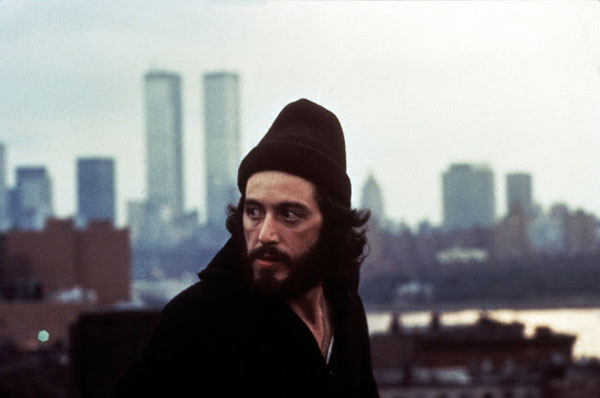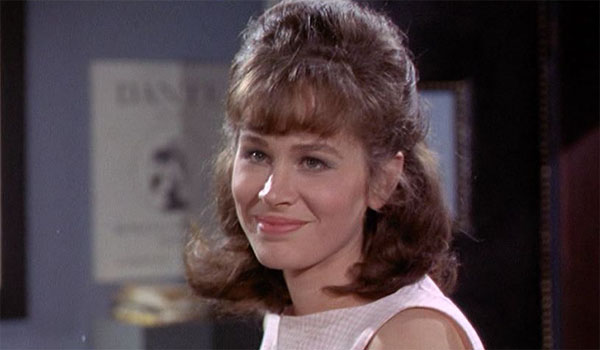“A young man explores 42nd Street at night, eyes and smile widening at the sights of porn theaters and dirty bookstores,” begins Aaron Cutler at the L. “‘I don’t think that was ever in a movie before,’ says film critic and programmer J. Hoberman of the early sequence in Francis Ford Coppola’s 1966 comedy You’re a Big Boy Now, the opening entry in the Museum of the Moving Image’s 19-film series Fun City: New York in the Movies 1967-75. Coppola’s film was the first approved by the Mayor’s Office of Film, Theatre and Broadcasting, which Mayor John V. Lindsay (who called New York a ‘fun and exciting city even when it’s a struck city’) founded to facilitate location-based fiction filmmaking…. At the same time, says Hoberman, ‘they were documentaries of that period,’ using actors and scripted narratives as a way to draw audiences into the city’s distinct, often skin-color-coded neighborhoods.”
Tomorrow’s opening night screening will be an inadvertent but fitting tribute to Karen Black, who passed away yesterday. “As a hormonally inflamed teenager,” writes Joe Leydon, “I briefly but intensely nursed a crush on Black way back in the day after seeing her play a sweetly spirited young woman who proves to be Miss Right for a fellow library employee (Peter Kastner) too easily distracted by a crazy/sexy Miss Wrong (Elizabeth Hartman) in You’re a Big Boy Now (1966), a pre-Graduate coming-of-age comedy that hardly anyone—not even its director, Francis Coppola—ever has nice things to say about anymore. (How much did I—do I—love this flick? I still have an original vinyl LP of the soundtrack album—featuring ‘Darling, Be Home Soon,’ the title tune and other songs by the Lovin’ Spoonful—and a Warner Archive DVD of the film itself.)”
Back to the series at hand. “A would-be reformer who looked like a movie star, Lindsay was our Sixties,” writes Hoberman at Artinfo. “He prevailed, somewhat improbably, in successive three-way elections, running first as a Republican-Liberal in 1965 and then as a Liberal four years later, to lead the city through one of the stormiest periods in local, as well as national (not to mention international) history.” Hoberman notes that it was Daily News reporter Dick Schaap who picked up the Lindsay quote about NYC that Aaron Cutler cites and “named Lindsay’s town ‘Fun City,’ an ironic coinage that would endure through New York’s innumerable crises (and crises averted).” And as for Lindsay’s idea to encourage Hollywood to cross the continent, “it worked brilliantly—although it can’t be said that the gritty, caustic, sometimes brutal movies made in NYC idealized life here. Not that they weren’t hyperbolic: If anything, movies like Serpico (August 11), Superfly (August 16), and Midnight Cowboy (August 25) verged on the hysterical in dramatizing the day-to-day fortitude exacted by what was then the Western world’s greatest metropolis.”
MoMI’s Moving Image Source has posted a first round of Hoberman’s program notes, excellent pieces on this weekend’s screenings, as well as his introductory essay, in which he writes: “Fun City movies overlapped a number of tendencies and cycles: The Hollywood New Wave, the Hollywood Jew Wave, Blaxploitation, the law and order Nixon-era policier, the disaster flicks. Some directors, like Sidney Lumet and Jerry Schatzberg, were native New Yorkers; even more were Europeans making their first American movies (Roman Polanski, John Schlesinger, the three Czech émigrés)…. New York City was the star, not least in its indigenous actors—Godfrey Cambridge, Robert De Niro, Hector Elizondo, Elliott Gould, Walter Matthau, Zero Mostel, George Segal, and Barbra Streisand to name a few. The most flamboyant was Alfredo James Pacino, born in East Harlem, raised in the Bronx by his Sicilian grandparents, a high-school dropout, product of the Actors Studio, and Off-Broadway Obie winner before a succession of juicy roles in a series of New York movies elevated him to New Hollywood aristocracy. Pacino’s Sonny, the manic protagonist of Dog Day Afternoon, personified New York mishigas, at least until he was supplanted by two years later by Robert De Niro’s even nuttier fellow Vietnam-vet Travis Bickle.”
For a bit more on the series running through September 1, see Lisa L. Colangelo in the Daily News.
Update, 8/16: J. Hoberman‘s notes are up for this weekend’s two evenings, “Urban Horror” and “Fables of Racial Tension.”
For news and tips throughout the day every day, follow @KeyframeDaily on Twitter and/or the RSS feed. Get Keyframe Daily in your inbox by signing in at fandor.com/daily.





